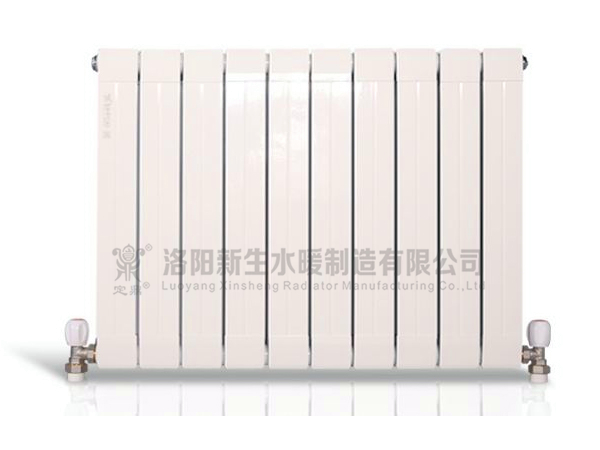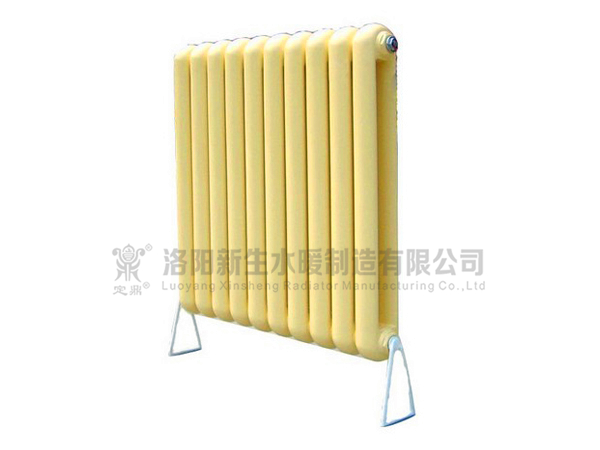Heating has gradually begun in northern cities, and many people's homes are experiencing warmer temperatures, no longer fearing the cold of winter. Recently, many friends have reported that their heating systems are on, but the temperature remains low. After checking their radiators, they've discovered that half of them are hot, while the other half aren't. What's going on? How can this be resolved?
Radiators come in many types, including steel, cast iron, and imitation steel. There are four main reasons why a radiator might be hot during normal heating:
1. Air blockage
Radiators are hollow, formed by joining individual water pipes together to form a single unit, or by connecting multiple pipes in parallel or in series. In either case, air can collect at the top of the radiator, creating an air blockage. This can cause one part of the radiator to be hot while the other isn't.
Solution: If the radiator is blocked and partially doesn't heat, bleeding the radiator individually can solve the problem. There's usually an air bleed valve at the top of the radiator; simply turn it to release the air. However, be sure to completely release the air until hot water flows out. If the radiator doesn't have a built-in air bleed valve, consider adding one yourself, or bleed the air from a high-level pipe connected to the radiator. Once the air is released from the radiator, the problem of half the radiator not heating up is solved.
2. Internal Radiator Rust and Clog
Although many radiators currently have some corrosion resistance, they will still rust over time, especially steel radiators, which are particularly prone to rust. Furthermore, the water in the heating system itself forms scale and can become filled with dirt, such as mud and sand, during the heating process. Rust, scale, silt, and other debris can clog the radiator's internal pipes, causing blockage and poor water circulation. This can also result in half the radiator being hotter and half colder.
Solution: If bleeding air doesn't resolve a radiator's half-heat problem, consider internal blockage. If this is a blockage, dismantle the radiator and clean and unclog it. This is not recommended for individuals; instead, hire a professional radiator cleaning technician using cleaning equipment. A pulse cleaning method is also recommended. After cleaning, reinstall the radiator and bleed air again to resolve the half-heat problem.
3. Improper Radiator Inlet and Outlet Installation
Radiators have strict inlet and outlet connection requirements; they cannot be mixed. There are several different ways to install the radiator, depending on user needs, such as top supply and bottom return, or bottom supply and bottom return. If the heating installer accidentally installs the radiator's inlet and outlet incorrectly, this can also cause the radiator to heat halfway and not the other way around. This often occurs with new heating projects. If the radiator is half hot and half not hot within the first year of operation, it's likely due to an installation error. If the problem was previously unresolved and then reappears, it's likely due to the two aforementioned reasons.
Solution: For incorrectly installed radiator inlet and outlet pipes, we can fix it by disassembling and reinstalling them. Simply connect the corresponding pipes according to their proper inlet and outlet connections, and the half-heat, half-not-heat problem will be resolved.
4. Insufficient Heating System Pressure
With urban development, the area of residential heating has increased annually, and so has the area served by heating stations. This has resulted in many areas where the original heating capacity and heating area are mismatched, creating a "small horse pulling a large cart" situation. Specifically, buildings closer to the heat source may be hotter than those farther away, or some rooms within a building may be hot while others are colder, or the upper floors may be hot while the lower floors are colder. These phenomena are caused by system imbalance and insufficient heating pressure.
Solution: For those who haven't modified their heating system, find a professional company to fix it; don't try it yourself.
If your radiator is half hot and half cold, it's usually due to the four reasons mentioned above. The correct solution is to identify the cause based on the situation. If it's a blockage, bleeding the air can solve the problem. If it's a blockage, you need to have a professional clear the radiator. If it's due to incorrect inlet and outlet connections, disassembling and correcting the connection can solve the problem.


